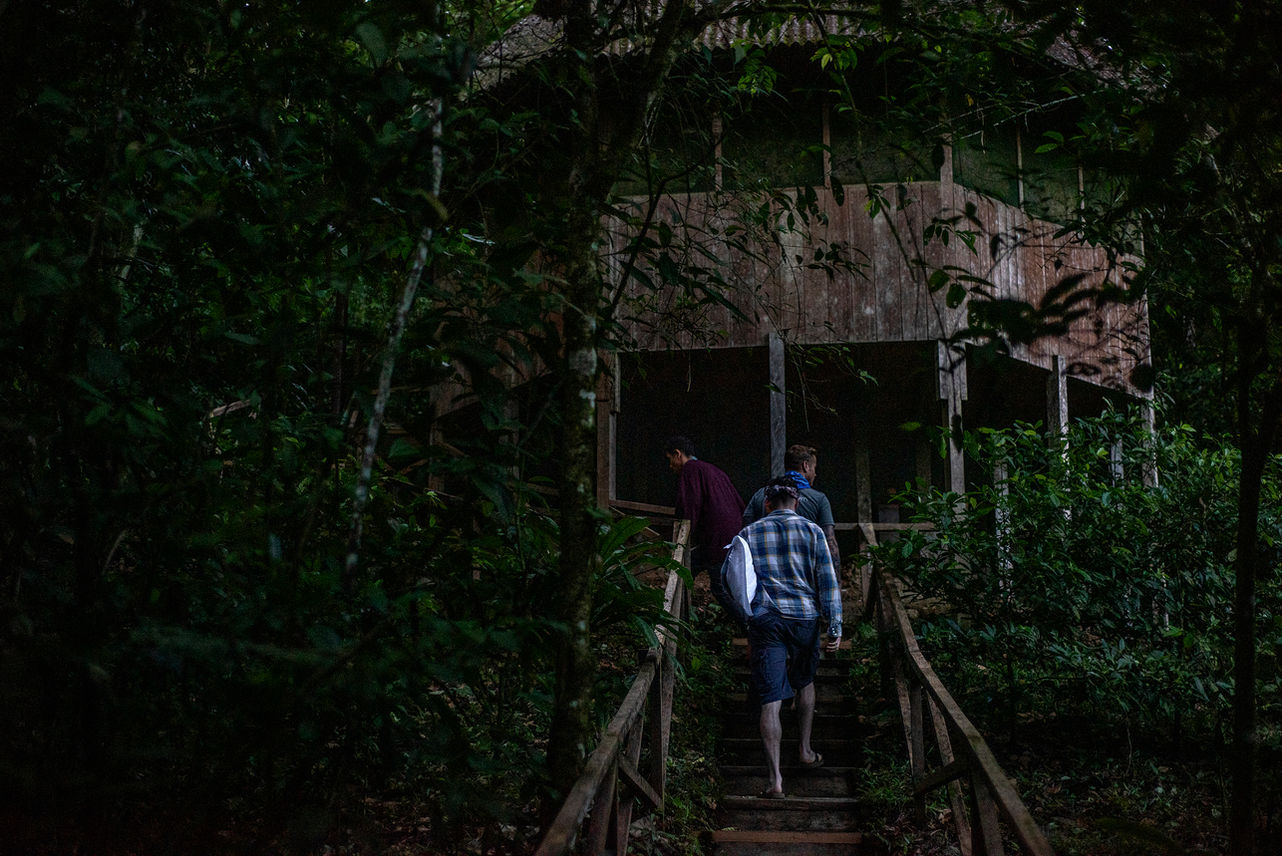Veterans are flocking to the Amazon to Trip on Outlawed Tea Some Say Tames PTSD
Veterans are flocking to the Amazon to Trip on Outlawed Tea Some Say Tames PTSD
A plant cocktail known as ayahuasca, which is banned in the U.S., is becoming increasingly popular among America’s bravest
By HENRICK KAROLISZYN
TARAPOTO, PERU – Daniel Rodriguez leaps to his feet.
“This is getting real,” he says. “This is getting real.”
It’s 10 p.m. on a Tuesday night and Rodriguez stands amid a group of elite Army veterans. Inside an elevated wooden hut, deep in the north Peruvian jungle, the rest sit and watch. Everyone else is finished with the worst of the vomiting, traumatic visions and psychedelic effects spurred by ayahuasca. But the murky-brown psychoactive tea is only now hitting Rodriguez.
The hallucinogenic drink plunges him thousands of miles away to Afghanistan where it’s Oct. 3, 2009 all over again. A lucid clarity opens up. Bullets howl and rip through Combat Outpost Keating (COP) as a 21-year-old Rodriguez fills out forms at an aid station 1000 feet away. Strapped with only his 9mm, he dekes his way back to the barracks, firing into the shroud of mountains on three sides. Dirt around him transforms to smoke amid the rattle of muzzle blasts. When he reaches the outpost, rumbling with adrenaline, he loads his M240 machine gun. Kevin Thompson, his point man in the unit, scopes a dozen fighters along the ridge line. Rodriguez blasts in their direction. A moment later, he sees the 6-foot-5 soldier’s knees buckle as Thompson takes a bullet below the eye. He dies before hitting the ground.
Rodriguez sees himself get back on the M240, he sees himself trying to haul his dead friend’s body back to shelter. Both attempts end with shrapnel from a rocket-propelled grenade lodging into his neck and legs, cauterizing instantly. He winces. The landscape is dusty but he knows exactly where he is. Based in the Nuristan province of eastern Afghanistan, COP is tactically considered an easy target, so Rodriguez must gun around the periphery. The action, he believes, will override the physical pain and overwhelming heartache from a lost promise.
“When I get out of this shithole, I’m going to play college football,” Rodriguez vowed this to his fallen friend weeks prior to the surprise attack. At 5 foot 8 and 175 pounds, he knew his gridiron dreams were just that. But it was dreaming that offered solace in the trenches. That was now vanished: Thompson was gone and the shithole was hellbent on killing him, too. Rodriguez watches himself reload, aim, and fire at a rapid clip, targeting as many Taliban as possible. It all feels so real. Muscle memory flexes his next few hours of combat that flash with pulsating light, bellowing booms, and staccato pin pricks permeating through his bones.
The U.S. Army is severely outmanned throughout what will become known as the Battle of Kamdesh. More than 300 Taliban insurgents swarmed the base which started with only 53 American soldiers. The GIs still manage to hold and claim 150 enemy fatalities. It's one of the bloodiest days and unlikeliest victories of the war. Eight Americans die, and 27, like Rodriguez, became wounded. But his heroics earned him the Purple Heart and Bronze Star. The battle was also recounted in Jake Tapper’s book, “The Outpost: An Untold Story of American Valor,” that’s been adapted to the big screen with Scott Eastwood and Orlando Bloom playing lead roles set for wide release in spring of 2020. Rodriguez plays himself in the film and never truly get over the day.
With a vivid recall of the event moving through his brain, he grips the metallic chain around his neck. It dangles over his lean chest, north of a tattooed tiger and scripted letters that read, “Freedom Isn’t Free.”
“Why do we covet what kills so many?” he says, referring to the metal in his hands. It's the same material that remains in his legs, the shrapnel that set off metal detectors when he boarded each flight to reach Peru. Now, about 3,900 miles away from his comfy Hermosa Beach apartment, he wonders why he chose to re-experience the worst pain of his life for a cup of tea.
Rodriguez is only one of a growing list of combat vets seeking to address their post traumatic stress disorder (PTSD) and traumatic brain injuries (TBIs) outside the conventional path.
The options for veterans in America typically revolve around prescribed medications and therapist visits. But it has done little to stem the rate of veteran suicides. The U.S. Department of Veteran Affairs (VA) reported a 26% increase in veteran suicide rates between 2005 and 2016. 60,000 veterans killed themselves between 2008 and 2017. An average of 20 veterans commit suicide daily in America and between 11 and 20 % of veterans from Operation Iraqi Freedom and Enduring Freedom are battling PTSD. Even those in the best care hospitals of the VA are prone to fatal self-harm. Nearly 30 veterans killed themselves on VA medical facilities in the past two years. It's amid this ominous backdrop that veterans find themselves seeking out different cures for their mental pain.
























